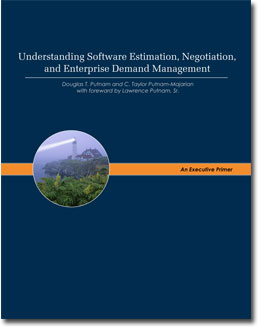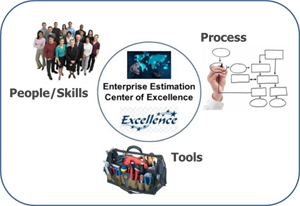New Book - Understanding Software Estimation, Negotiation, and Demand Management: An Executive Primer

QSM is pleased to announce the release of a new book, Understanding Software Estimation, Negotiation, and Demand Management: An Executive Primer. Historically, only 20% of software projects are completed successfully and with software becoming critical to nearly every company and industry, having such a high rate of failure is simply unacceptable anymore. It is for this reason that QSM has compiled this collection of articles that will aid anyone from project managers to CIOs in implementing software estimation, negotiation and demand management methods efficiently to reduce costs.
Larry Putnam, Sr., founder of QSM and a pioneer and top problem solver in the software estimation and measurement field, provides the foreword to the book, which is co-authored by his son and granddaughter, Doug Putnam and Taylor Putnam-Majarian. Combined, the authors bring more than 40 years of experience in software measurement to a range of topics, including:

 I have been a software project estimator for 20 years. Like many people who have worked a long time in their profession, I find myself applying my work experience to other events in my life. So, when a family member tells me that he or she will be back from a trip into town at 3:30, I look at their past performance (project history) and what they propose to do (project plan) and add an hour. Usually, I am closer to the mark than they are.
I have been a software project estimator for 20 years. Like many people who have worked a long time in their profession, I find myself applying my work experience to other events in my life. So, when a family member tells me that he or she will be back from a trip into town at 3:30, I look at their past performance (project history) and what they propose to do (project plan) and add an hour. Usually, I am closer to the mark than they are.
 People – Finding people with the right characteristics and developing their skills;
People – Finding people with the right characteristics and developing their skills;
 How in the world does landing on an aircraft carrier relate to
How in the world does landing on an aircraft carrier relate to